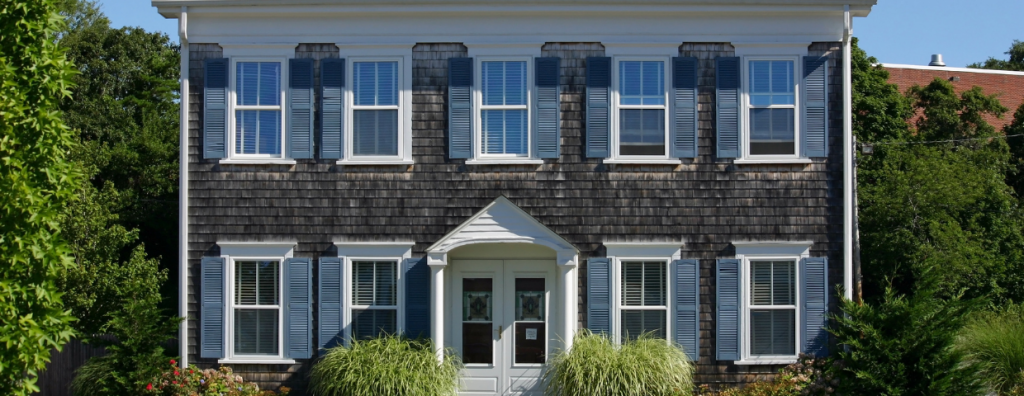Today, the Cape Cod architectural style is synonymous with waterfront property, windy beaches, and vacation getaways. Known for its distinct exterior features and cozy interior spaces, the Cape Cod home has become an American classic.
History of the Cade Cod Home
The original idea behind the Cape Cod home was to bring a bit of across-the-pond familiarity to the early English settlers in New England. The design of the home was conceptually similar to an English cottage, except with certain modifications to fit the harsher Northeast climate. These homes were built throughout the region during the 19th century, then experienced a surge in popularity in the early-to-mid twentieth century, due to a renewed interest in colonial-era architecture and their affordability in a post-World War II economy.
What is a Cape Cod Home?
The Cape Cod style uses simple lines and shapes that recall the English cottages they’re inspired by. They are typically one or two stories, square or rectangle in shape, with steeply pitched roofs, shingled exteriors, window shutters, and a central chimney. The steepness of the roofs was designed to reduce snow buildup, thereby reducing the risk of a roof collapse from bearing too much weight. The characteristically low ceilings were meant to prevent heat from escaping, while the shutters served as a wind block against the cold New England breeze.
There are multiple styles of Cape Cod homes. The easiest way to tell the difference between styles is to count the number of windows on either side of the front door. If there are two windows on one side of the door, it is what is known as a “half cape.” A home with two windows on each side of the front door is known as a “full cape.” Regardless of which sub-category a particular Cape Cod home falls under, they all share a flat front façade, which creates their square or rectangular shape. Over time, designers have updated the Cape Cod design to accommodate the needs of modern life, but their unmistakable aesthetic remains timeless.
Image Source: Getty Images – Credit: OlegAlbinsky
 Facebook
Facebook
 X
X
 Pinterest
Pinterest
 Copy Link
Copy Link
